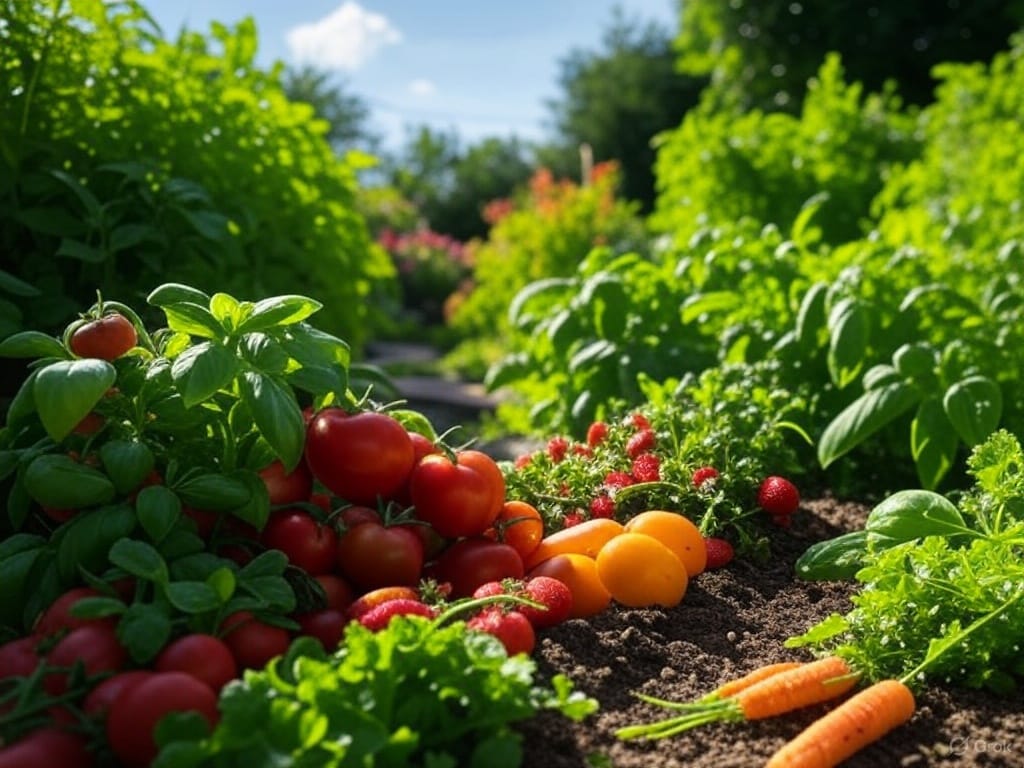Start a Thriving Home Garden
Starting a home garden empowers you to grow fresh, flavorful food while boosting self-sufficiency with simple steps tailored for beginners.Starting a home garden empowers you to grow fresh, flavorful food while boosting self-sufficiency with simple steps tailored for beginners.

In an era where food security can feel uncertain, there’s something empowering about growing your own food. Starting a home garden doesn’t just put fresh herbs, vegetables, and fruits on your table—it connects you to nature, saves money, and offers a buffer against unpredictable times. Whether you’ve got a sprawling backyard or a tiny balcony, anyone can cultivate a thriving garden with the right know-how. This guide will walk you through the essentials, from picking the perfect plants to nurturing your soil and keeping pests at bay. Let’s dig in!
Why Start a Home Garden?
Gardening is more than a hobby; it’s a practical skill with tangible rewards. Imagine stepping outside to snip fresh basil for dinner or pulling carrots straight from the earth. Beyond the joy of homegrown flavors, gardening reduces your reliance on grocery stores, cuts down on plastic packaging, and gives you control over what goes into your food—no pesticides or mystery chemicals here. Plus, in challenging times like supply chain disruptions or economic shifts, a garden can be a lifeline, ensuring you’ve got fresh produce no matter what.
Even beginners can succeed with a little planning. You don’t need a green thumb—just patience, curiosity, and a willingness to learn as you grow.
Choosing the Right Plants for Your Garden
The first step to a thriving garden is selecting plants that suit your space, climate, and goals. Before you buy seeds or seedlings, ask yourself: What do I love to eat? What grows well where I live? And how much time can I commit?
Herbs: The Easy Win
Herbs like basil, parsley, mint, and cilantro are perfect for beginners. They grow quickly, don’t need much space, and thrive in pots or small garden beds. A sunny windowsill can even work if you’re short on outdoor room. Fresh herbs elevate your cooking and often double as natural pest repellents—marigolds and mint, for example, can deter unwanted bugs.
Vegetables: Nutrient-Packed Staples
For vegetables, start with forgiving options like lettuce, radishes, or zucchini. Tomatoes are a popular choice, offering high yields with moderate care, though they’ll need support as they grow. Root veggies like carrots and potatoes are low-maintenance once planted, but ensure your soil is loose and well-drained. Check your region’s growing season—cool-weather crops like spinach do best in spring or fall, while peppers and eggplants crave summer heat.
Consider Your Climate
Your local climate dictates what thrives. If you’re in a hot, dry area, drought-tolerant plants like rosemary or beans might be ideal. In cooler zones, hardy greens like kale or chard can withstand a chill. Look up your USDA Hardiness Zone (if you’re in the U.S.) or consult a local nursery for tailored advice.
Start Small
Resist the urge to plant everything at once. Begin with 3–5 types of plants to keep things manageable. As you gain confidence, expand your garden’s variety.
Mastering Soil Care: The Foundation of Growth
Healthy soil is the secret to a flourishing garden. Think of it as the living ecosystem that feeds your plants—rich soil means robust roots and bountiful harvests.
Test and Prep Your Soil
Start by checking what you’re working with. Is your soil sandy, clay-heavy, or loamy? You can buy a simple soil test kit to measure pH and nutrient levels. Most edibles prefer slightly acidic to neutral soil (pH 6.0–7.0). If your soil’s off-balance, amend it: add lime to raise pH or sulfur to lower it.
Build Nutrient-Rich Soil
Compost is your best friend here. Kitchen scraps like vegetable peels, coffee grounds, and eggshells break down into a nutrient-packed booster for your plants. Mix compost into your soil before planting, or use it as a top dressing later. If you’re starting from scratch, consider raised garden beds filled with a blend of topsoil, compost, and peat moss for optimal drainage and fertility.
Water Wisely
Soil should stay moist but not soggy—overwatering drowns roots, while underwatering starves them. Stick your finger an inch into the dirt; if it’s dry, it’s time to water. Early morning is ideal, letting leaves dry out during the day to prevent fungal issues.
Setting Up Your Garden Space
Your garden’s layout depends on your available space, but creativity can make anything work.
Outdoor Gardens
Got a yard? Mark out a sunny spot—most food crops need 6–8 hours of direct sunlight daily. Clear weeds, loosen the soil with a shovel or fork, and mix in compost. Raised beds or rows keep things organized and improve drainage.
Container Gardening
No yard? No problem. Pots, buckets, or even old crates can host herbs, tomatoes, or peppers. Ensure containers have drainage holes and place them where they’ll catch sunlight. This method’s great for balconies, patios, or renters who might move.
Vertical Options
Maximize small spaces with vertical gardening. Use trellises for climbing plants like peas or cucumbers, or stack planters for herbs and strawberries. It’s space-efficient and adds a lush, green vibe to your home.
Pest Control: Keeping Your Garden Safe Naturally
Pests are part of gardening, but you don’t need harsh chemicals to manage them. Natural methods work just as well and keep your food safe.
Know Your Enemies
Common culprits include aphids (tiny sap-suckers), slugs (leaf-munchers), and caterpillars. Watch for chewed leaves, sticky residue, or wilting plants as signs of trouble.
Natural Defenses
Introduce beneficial insects like ladybugs, which devour aphids, or plant companions like marigolds to repel pests. A spray of water mixed with a few drops of dish soap can knock off smaller bugs—test it on a leaf first to avoid damage. For slugs, try a shallow dish of beer sunk into the soil; they’ll crawl in and drown.
Physical Barriers
Row covers or netting protect young plants from birds and insects. Crushed eggshells around stems deter slugs with their sharp edges. Check your garden daily—catching pests early keeps infestations manageable.
Step-by-Step: Planting and Growing
Ready to get started? Here’s a simple roadmap:
- Plan Your Season: Research planting times for your chosen crops. Seed packets or online guides can tell you when to sow.
- Start Seeds Indoors (Optional): For a head start, plant seeds in trays 6–8 weeks before your last frost date, then transplant seedlings outside.
- Plant Outdoors: Dig small holes or trenches, spacing plants according to their needs (check seed packets). Cover roots gently and water well.
- Tend Regularly: Water consistently, pull weeds, and watch for pests. Mulch with straw or grass clippings to retain moisture and block weeds.
- Harvest: Pick herbs as needed, and harvest veggies when ripe—regular picking often encourages more growth.
Troubleshooting Common Beginner Challenges
Gardening’s a learning curve, and hiccups happen. Yellow leaves might mean overwatering or nutrient deficiency—adjust water and add compost. Slow growth could signal too little sun or poor soil; relocate pots or enrich the ground. If plants bolt (flower too soon), it’s often heat stress—shade them during hot spells.
Don’t fear failure—a wilted plant teaches you what to tweak next time. Every season sharpens your skills.
The Rewards of a Thriving Garden
As your garden grows, so does your confidence. There’s nothing like tasting a tomato you nurtured from seed or sharing a meal made with your own herbs. Beyond the plate, gardening boosts mental health, cuts grocery bills, and builds resilience. In tough times, it’s a small but mighty step toward self-sufficiency.
Start small, experiment, and enjoy the process. Your thriving home garden is just a few seeds away—get planting!





